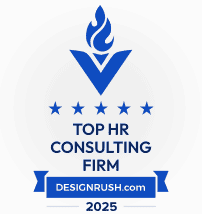Testimonials
The Successful Story Of Our Client
⭐ ⭐ ⭐ ⭐ ⭐ 4.8 / 5 rating

Dean Alverson
Chief Executive Officer
Working with Exceptional HR Solutions has been a game-changer for our company. Their deep understanding of HR practices and ability to navigate complex employment issues allowed us to confidently implement new policies, streamline recruitment processes, and create a more positive workplace culture. Their proactive approach and excellent communication skills ensured we always felt supported and informed, making them an invaluable partner for our organization.
I highly recommend Jennifer Reiner, with Exceptional HR Solutions, to any company seeking a reliable and knowledgeable HR partner who can effectively address challenges and support strategic growth!

Jason Taylor
CEO Selery, Inc
Neil and the entire team from Exceptional HR have been a huge help to our company. We have grown very quickly over the years and really just gotten by internally with our HR needs. Their team helped us bring order to the chaos. They have also been invaluable in helping us fill some key positions with quality employees. Also, when tough situations arrive and we need to make a decision on a current or future employee they have been great and trusted advisors that we can rely on to give us the best advice for our company.

Raj Patel
Operations Manager
Neil's HR solutions have been a pivotal element in NextGen Tech's narrative of success. Their cutting-edge strategies and tools have refined our HR operations, enhancing both efficiency and effectiveness. The dedication to excellence and a forward-thinking stance on HR challenges demonstrated by Neil's team has been extraordinary. They've been instrumental in fostering a vibrant and dynamic workplace at NextGen Tech, where every employee feels truly valued and motivated.

Matt Newton
Chief Executive Officer
Exceptional HR Solutions has been an absolute game-changer for our company over the past six months. Neil and his team bring a level of expertise, professionalism, and responsiveness that is truly unmatched. From streamlining our HR processes to ensuring compliance and providing invaluable strategic guidance, they have exceeded our expectations at every turn.
What sets Exceptional HR Solutions apart is their personalized approach—they don’t just offer cookie-cutter solutions; they take the time to understand our unique needs and tailor their services accordingly. Whether it’s handling complex employee matters, refining policies, or supporting our leadership team, Neil has been a trusted advisor every step of the way.
If you're looking for a fractional HR partner who is knowledgeable, proactive, and genuinely invested in your success, I highly recommend Exceptional HR Solutions. They’ve become an integral part of our team, and we couldn’t be more pleased with their support.

Tracy Reep
Chief Executive Officer
We highly recommend Exceptional HR Solutions to anyone who is looking for a reliable and professional vendor that can provide human resources consulting services. They have exceeded our expectations and delivered a high-quality service and expertise. They are also very friendly, helpful, and easy to work with. They are not just vendors, but a real partner that we trust and value!



